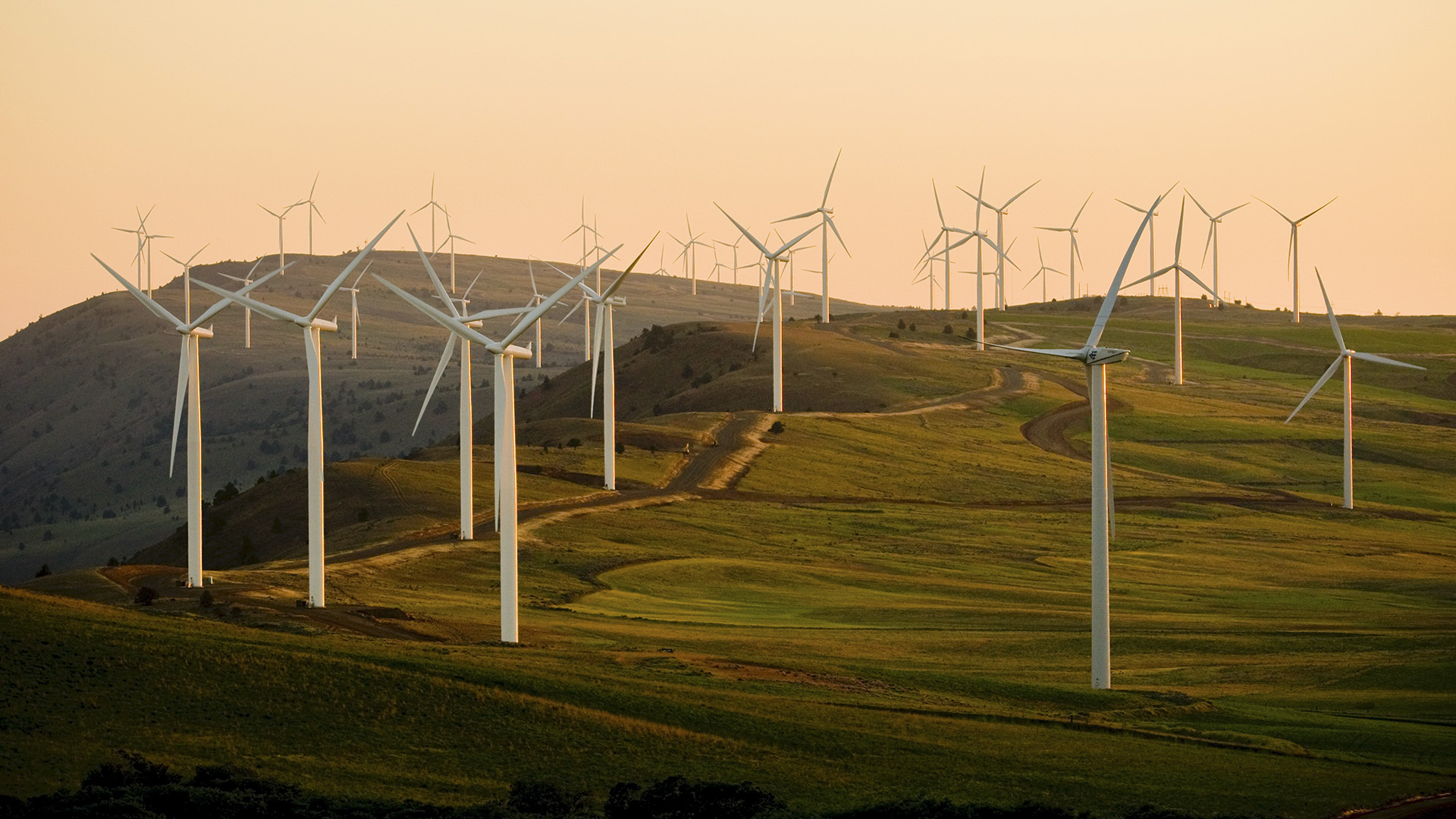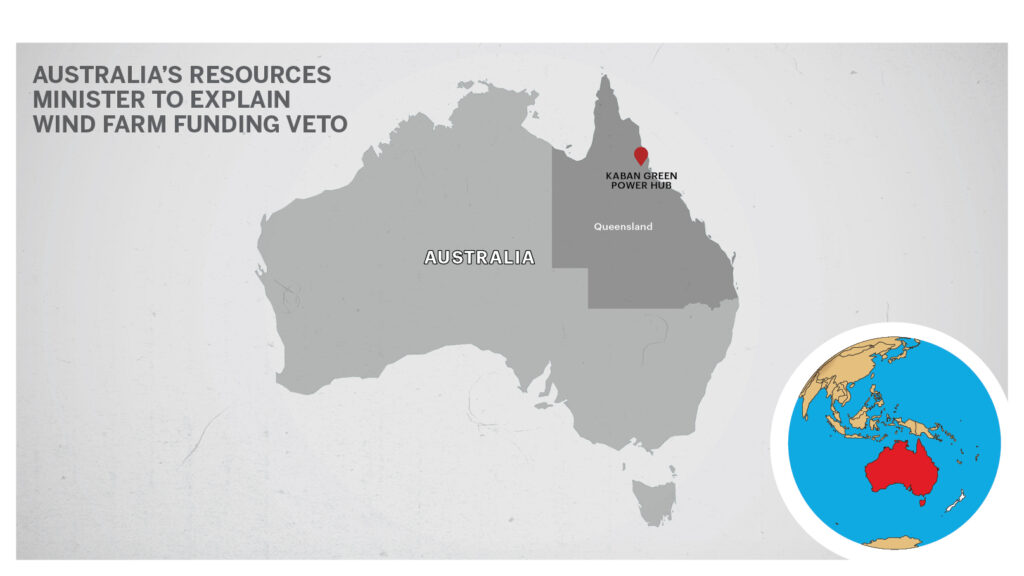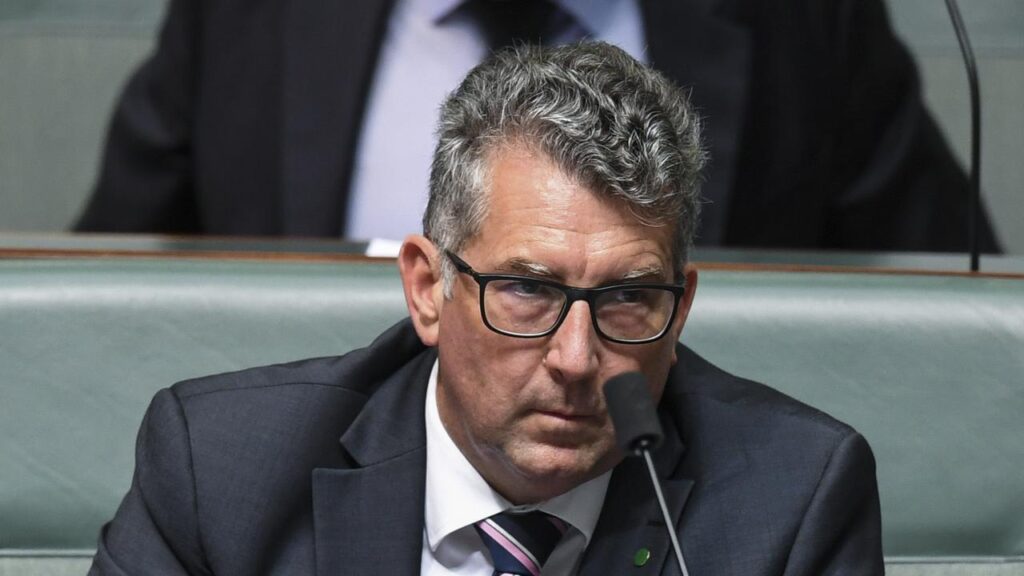
BRISBANE, Australia — Australia’s federal resources minister will explain to parliament why he stepped in to stop a taxpayer loan to help a planned wind farm in far the north-eastern state of Queensland.
Keith Pitt used his ministerial veto power to stop the AU$ 280 million ($219 million) loan to the Kaban green power hub, which comprises a 157-megawatt wind farm and 100-megawatt battery.
The Northern Australia Infrastructure Facility recommended the project receive a loan.
“We’re about affordable, reliable, and dispatchable power, so it didn’t meet the requirements for the government’s policy,” Pitt told the media on May 10.

“The decision I’ve made is on the ability for the project and the proponent for dispatchable, affordable, reliable power, and that’s what I’ve done.
“A statement of reasons will be provided in the parliament, as is required by the legislation.”
Pitt would not confirm when asked repeatedly if the loan would cover the battery, which would store wind-generated power so it could be dispatched when needed.
He would not say how much battery storage was needed for him to consider the project dispatchable.

“How big is the battery? Is it an AA battery, is it a very large battery, is it a small battery, does it run one house?”
Northern Australia Infrastructure Facility (NAIF) has previously loaned money to multiple energy projects, including gas, hydropower and a hybrid solar and gas plant.
The Kaban project has been put forward by Neoen, the company responsible for South Australia’s Hornsdale Power Reserve — the largest lithium-ion battery in the world.
Kaban has a power purchase agreement with Queensland government-owned CleanCo to support the state’s target of 50 percent renewable electricity by 2030.
CleanCo in Queensland is a publicly-owned electricity generation and trading company that is run by a combination of renewable and innovative energy.

The federal government has no renewable energy target, with the coalition instead focused on ensuring the power supply is reliable.
Another AU$ 58.6 million ($45.9 million) has been set aside in May 11’s federal budget to help support gas pipelines, port terminals and new gas fields.
The government released an interim National Gas Infrastructure Plan alongside the funding.
The final version will be released later this year and will be the government’s blueprint for the east coast gas market up until 2040.
Energy Minister Angus Taylor has also flagged additional funding to fill the baseload power gap left by the impending closure of AGL’s coal-fired Liddell power plant.
Amongst Australia’s leading energy companies, AGL offers gas, electricity, renewable and solar energy services along with mobile and internet plans.
(Edited by Vaibhav Vishwanath Pawar and Nikita Nikhil. Map by Urvashi Makwana)
The post Australia’s Resources Minister To Explain Wind Farm Funding Veto appeared first on Zenger News.

